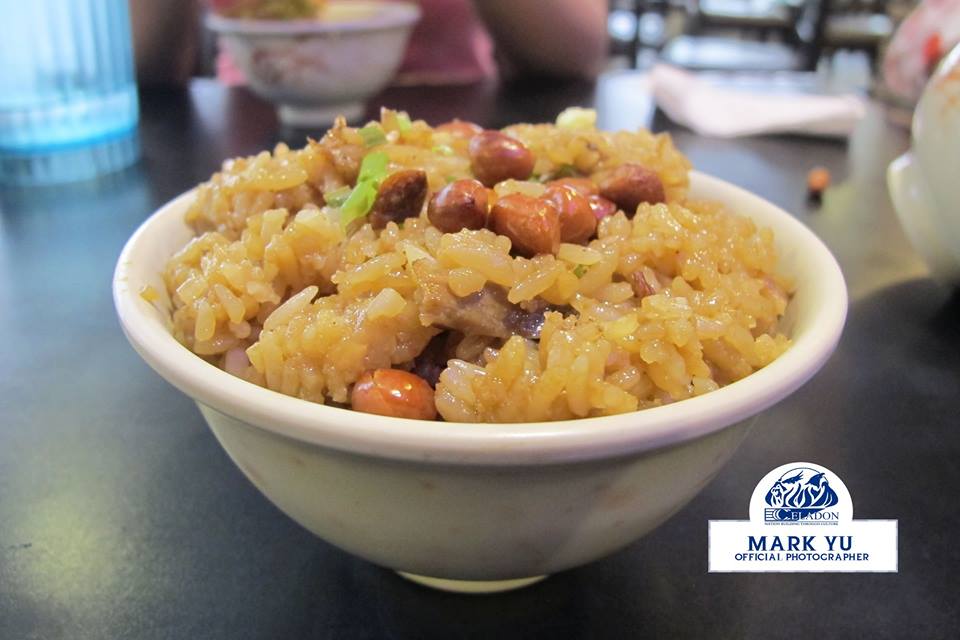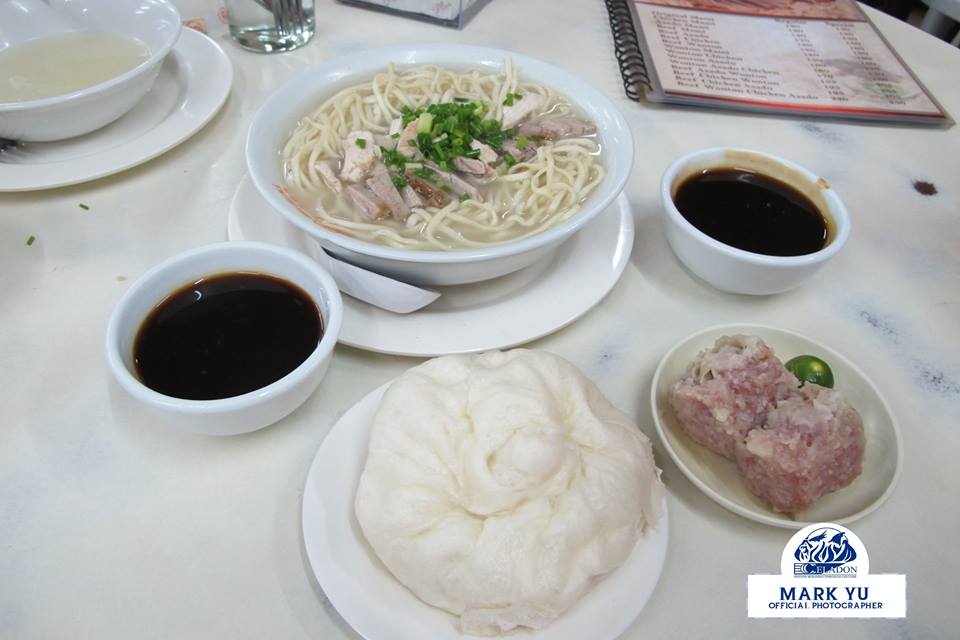From your go-to fancy Chinese restaurant to the siomai stand down at the train station, one can see that Chinese food is everywhere. The popularity of Chinese food not only reflects just how long the Chinoy community has existed, but also it shows how it highly influenced Filipino tastes, and vice versa. For example, combining tamis (sweet), asim (sour), and alat (salty) is a characteristic and a norm in Filipino cuisine. In time, these characteristics found their way into Chinese cuisine.
To get a taste of the longstanding bond between both cultures, a food trip down in Binondo, the world’s oldest Chinatown, couldn’t be better. Here are some of the hotspots which one can garner a visit or two (or more).

CAFE MEZZANINE
Cafe Mezzanine is a popular restaurant in Ongpin that was featured in CNN Travel. Owned by “Mr. Ube,” Gerry Chua, all the revenues goes to the Binondo Paco Fire Search and Rescue Brigade. The cafe consists of two floors: the Chuan Kee on the first and the eating area on the second. Upon entering, one might notice that the cafe has a certain motif: purple fireman.
A specialty of Cafe Mezzanine is their Soup #5, a soup you won’t find in your run-of-the-mill Chinese restaurant as it is originally a Filipino dish. If you are eating with a squeamish eater, don’t ask the waiter what the soup consists of. Soup #5 is made out of bull’s testicles, and is said to improve metabolism along with being an aphrodisiac. We also ordered a Kiam Pung, a Chinese sticky rice, to compliment the soup. The soup was clear, like a regular nilaga (beef soup), but the smell was unfamiliar and bordered on foul. There were different types of meat in the soup—some looked like regular pieces of beef and others looking akin to liver. We swallowed our apprehensions and took a bite. The meat that appeared like regular beef tasted like it. While the pieces that looked like liver had the texture of liver, it had a more flavorful taste. The muted flavour and sticky texture of the rice complimented the flavourful taste of the soup perfectly.
the verdict
Soup #5 is a good example of Chinoy fusion because it contains both the exoctic flair of Chinese food (bull testicles!) and the warmth and familiarity of the nilaga. This is further emphasized by the way the sticky rice complimented the soup so well. The dish itself is a fun experience because of the added thrill of eating something so eccentric and exotic. Though it isn’t something I would consider eating twice, it is definitely worth trying, if not only for bragging purposes.

QUICK–SNACK
Lined with eateries and fruit stands, the narrow Carvajal Street is a popular backpacker’s go-to place for delicious, hole-in-the-wall cuisine. It is a street that appears in a plethora of travel guides of must-see food places in the Philippines. Quick-Snack, a restaurant no stranger to travel guides such as TripAdvisor, is an establishment that lives up to the good name of Carvajal.
The interior of Quick Snack was quite quaint and underwhelming. When asked for their specialty, Quick-Snack suggested their Lumpia Special (fresh spring rolls), a dish quite popular in the Philippines. The lumpia was nearly too big for the plate it was served in, and it came with sweet sauce at the side. Eating the lumpia was a messy ordeal, as it was overstuffed and bursting on your plate when one slices it open. Inside was the usual combination of carrots, celery, crushed peanuts, and other vegetables, but what stood out was the balanced seasoning of the filling complemented by the wansoy (cilantro), which lifted the dense filling and rich sweet sauce.
the verdict
The problem with hyped up restaurants is that more often than not, the product does not live up to its reputation, with common dishes, no less. In the case of Quick Snack, however, they were able to deliver something good and unique. The pancit was a far cry from the usual pancit, and their lumpia is now my basis of what a delicious lumpia should taste like. It’s something I would always buy when I catch myself in Binondo. Overall, though initially underwhelming, Quick Snack was able to live up to its and Carvajal’s reputation of good food.

MA MON LUK
From noodle peddling to owning multiple restaurant branches, Ma Mon Luk, the owner of his namesake restaurant, has made a mark in Chinese food in the Philippines, being one of the first to bring the noodle soup dish mami to the Philippines in the year 1918.
The old-style architecture of the restaurant matches the old world charm Binondo buildings had, and is a testament to how old the restaurant is. Since this is a restaurant popular amongst the Filipino-Chinese community, I asked friends for recommendations on what to order. One of them expressed her disbelief at the fact that I haven’t eaten there before, and recommended their noodle soup with brown sauce. The soup by itself was pale and slightly bland, which is where the brown sauce, thick and viscous with a pungent smell, comes into play. By itself, the sauce has a strong flavour, but when added into the soup, it balances out into a salty-sweet flavour, a very Pinoy characteristic. The noodles were perfectly cooked- soft and chewy at the same time. The good (and fun!) thing about their noodles is the fact that you get to add in the sauce and spring onions, allowing you to flavour the food exactly to your preference.
the verdict
It is a surreal experience to visit one of the first Chinese restaurants in the Philippines, back to where it all began. It was enlightening to taste what a mami is supposed to taste like – a simple soup-noodles-meat combination along with a sauce. The option to season your soup to your preference is an added plus as well. It definitely stands out compared to the popular, more seasoned and spiced mamis.
A trip to Binondo is a treat for the senses. The sights alone would make one marvel at the coexisting cultures and feel nostalgic over a time he and she was not born in. The food stalls and restaurants lining the streets are almost enough to make one full, enticing anyone walking the streets of Binondo for a taste of the exciting and the comforting. What’s better than enjoying the ever-popular fusion of Chinese and Filipino cuisine in the place where it all began?
UPDATE: We would like to apologize for any mistakes in the print edition. Quick-Snack is the correct spelling of one of the establishments reviewed.
Featured photo of Ma Mon Luk Mami above courtesy of Dishes and Places: dishesandplace.wordpress.com
Photo by Mark Yu





Pingback: 7 Things About Passion That Elements Staffers Discover - Elements Magazine